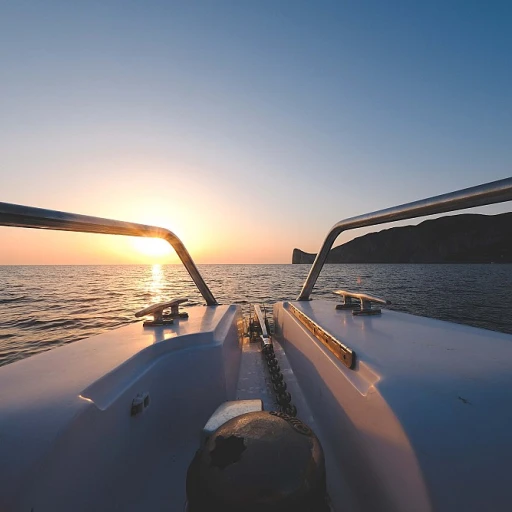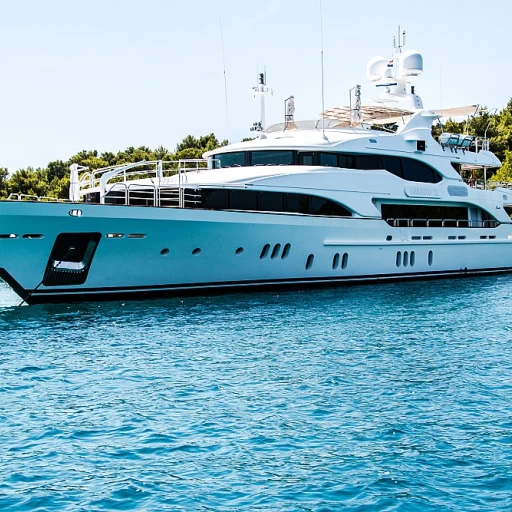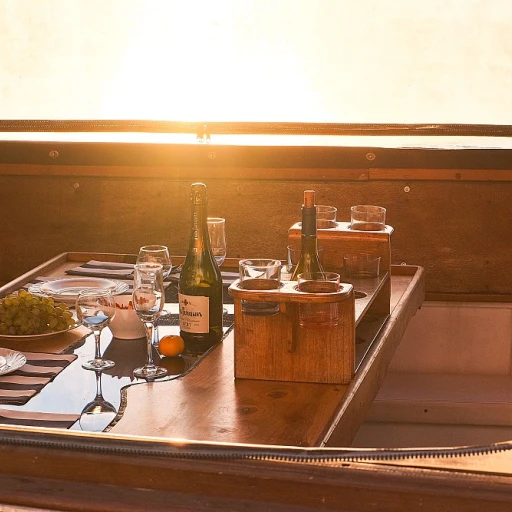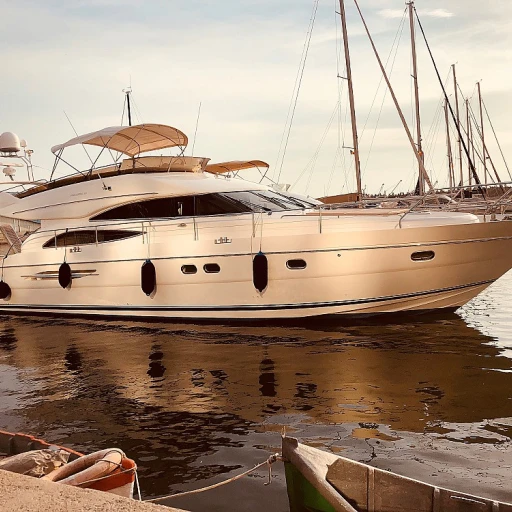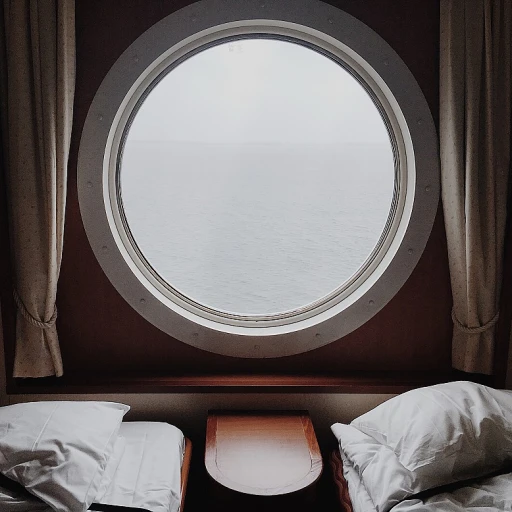The Timeless Appeal of Justive Vintage Yachts
The Everlasting Charisma of Classic Craftsmanship
There is an undeniable charm that classic vintage yachts possess. A journey through history, each yacht tells a story woven into its wooden hull and brass fittings, standing as a testament to the skill of its original builders. Craftsmen from renowned shipyards like Consolidated Shipbuilding at Morris Heights crafted these masterpieces, with intricate woodworking and the use of materials such as copper brass, which has, over time, added a distinct character to these antique vessels.
Such yachts are not just boats; they are living relics of a bygone era, much like a window into the past. This historical allure draws enthusiasts like magnets, appreciating the uniqueness and traditional design prominently seen in commuter yachts and classic wooden models. The justice in restoring and maintaining these yachts lies in honoring their original builders' vision while sailing gracefully into the future. Their distinct models, such as those once anchored at the lower Manhattan NYYC docks, evoke nostalgia while also showcasing timeless elegance.
The quest to own a vintage yacht extends beyond speed and performance. It's about preserving a slice of history on the open water, showcasing exquisite craftsmanship from a time when yachts were built with care and attention to every small detail. To own one is to possess a jewel, a jem among modern counterparts, offering an unparalleled experience that blends history with luxury. For more insights on unique opportunities in the yacht market, explore this opportunity on the market.
Challenges in Restoring Vintage Yachts
Restoration Challenges of Vintage Yachts
Restoring vintage yachts is no small feat. These classic wooden boats are laden with history and each model carries its own set of challenges, from sourcing authentic materials to maintaining the integrity of the original design. One significant hurdle in the restoration process is the balancing act between preserving the historical essence and incorporating modern conveniences. Shipbuilders of yesteryear, such as those at the renowned Morris Heights and Consolidated Shipbuilding, crafted each yacht with meticulous attention to detail, using materials like copper brass and traditional fuel types. Restorers today are tasked with honoring these original methods while ensuring the yachts can meet contemporary safety standards and performance expectations. In some cases, the engines of these antique boats, like the well-known commuter yachts that once graced the NYYC docks, demand complete overhauls. Modern marine technology offers solutions, but matching the original cruising speed of these vessels involves an in-depth understanding of their unique mechanical designs. Moreover, restoring the aesthetic aspects, like the classic brass fittings or the elegantly designed wooden hulls, requires skilled craftsmanship. The boats often feature intricate details that can only be revived by those with a deep appreciation and understanding of their historical importance. Before one can even begin restoring a yacht, finding the full details of its original construction often requires months of research, involving meticulous scrutiny of archives and consultations with historians or other passionate enthusiasts. Ultimately, those who embark on this journey are not merely refurbishing a boat; they are reviving a piece of maritime history, treating each yacht as a unique gem that deserves to carry its legacy forward. For a deeper look into similar restoration projects, you might explore the allure of Halcyon boats and their journey through time.Navigating the Market for Vintage Yachts
Venturing into the Vintage Yacht Arena
Navigating the alluring world of vintage yachts is as much about understanding their storied history as it is about discerning the model of these maritime treasures. Enthusiasts who dive into this sphere often find themselves encased within a realm where each boat tells a tale of justice served to the craftsmanship of yesteryears, and the intricate beauty of wooden constructs.
As prospective buyers immerse themselves in the search for their antique yacht, they uncover an undeniable jem in the market. The legendary ships from classic builders, like Consolidated Shipbuilding, are highly sought after. The full details of these historic masterpieces reveal an experience of sailing that transcends the boundaries of time.
Yet, perhaps one of the most daunting tasks is to find a small wooden yacht that maintains its authenticity, while still being suitable for engines that modern times demand. Balancing history with modernity, without straying from the spirit of the original design, is key. Noteworthy examples of these beauties once graced the NYYC docks or made their way from lower Manhattan, still bearing the signature touch of legendary yacht builders.
For those venturing into this specialized market, understanding the influence of prior owners, such as storied figures who moored at places like Morris Heights, is enlightening. Often, these yachts are seen as unique treasures that are expressions of the nautical culture that once existed on a grand scale.
Enthusiasts need to be equipped with detailed knowledge of the fuel type and the material wood, such as structures built by the renowned builder. These details play a crucial role in maintaining the historic integrity of the vessel, whether one deals with a commuter yacht or something entirely bespoke designed by Trendsetters like Jeremiah Milbank. As aficionados push forward, they must also remain vigilant of the different challenges posed by both the copper brass adornments and the brass fittings that hint at the grandeur of their heyday.
To newcomers, the vintage yacht market can seem opaque. Yet, the allure of restoring these vessels to their grandeur holds a magnetic appeal that continues to draw passionate communities to these revered classics. After all, the future trends lie ingrained in the passionate souls who seek to redefine what it means to own a piece of history, sailing through the waters of memory with the speed and grace that only time-tested yachts can offer. For those intrigued, we recommend exploring captivating vessels like the King Baby yacht as a perfect comparison to see how modern luxury intertwines with vintage charm.
The Role of Technology in Vintage Yacht Restoration
Innovation Meets Tradition in Yacht Restoration
When it comes to the magic of vintage yachts, the role of technology acts as a powerful ally rather than a replacement. Maintaining the authenticity of classic wooden models and preserving their well-documented history can seem like a daunting task. However, the integration of modern technology offers new windows of opportunity, enhancing these classic treasures and showcasing them in their original glory.- Identifying Materials and Maintaining Originality: Restoring a classic yacht such as those built by Consolidated Shipbuilding requires a deep understanding of their materials. Brass, copper brass fixtures, and wooden structures need special attention. Today’s technology allows enthusiasts to achieve precision in identifying and sourcing authentic wood and metal materials. Historical knowledge paired with new tools ensures that these yachts are not only meticulously restored but maintain their original charm.
- Advanced Tools in Diagnostics: As we move forward, the preservation of vintage yachts relies on advanced diagnostic tools. These tools help identify the condition of small components, offering full details on parts that need restoration or replacement. By adopting digital scanning methods, restorers can accurately assess the yacht's condition, making restorations both timely and cost-effective.
Passionate Communities and Vintage Yacht Enthusiasts
Communities United by a Shared Passion
In the world of vintage yachts, enthusiasts form a unique tapestry of communities, bound by a shared love for these timeless vessels. These groups are not just about owning a piece of history; they are about preserving the art and craftsmanship that go into every model, from the smallest wooden boat to the grandest yacht. Each vessel is a window into the past, offering a glimpse of the elegance and speed that defined a bygone era.
Passionate communities gather at events and online forums, sharing full details of their restoration projects and the challenges they face. Whether it's sourcing the right copper brass fittings or finding the perfect engine to match the original specifications, these enthusiasts are dedicated to justice for these classic wooden ships. The commitment to authenticity is paramount, with many opting for the original fuel type and material wood that defined the era.
Events and Gatherings
Throughout the months, various events bring together vintage yacht owners and admirers. From the NYYC docks to the shores of Lower Manhattan, these gatherings are a chance to showcase the results of hard work and dedication. It's a time for sharing stories of builders like Consolidated Shipbuilding and the legendary models they crafted. Whether it's a commuter yacht built by Consolidated or an antique boat from the hands of John Wells, these events celebrate the craftsmanship and history that make each yacht a jem in its own right.
Such gatherings also serve as a platform for discussing future trends and advancements in the industry. As technology continues to play a role in the restoration process, communities look forward to innovations that can enhance the preservation of these vessels without compromising their authenticity. The passion for vintage yachts is not just about looking back; it's about moving forward with respect for the past.



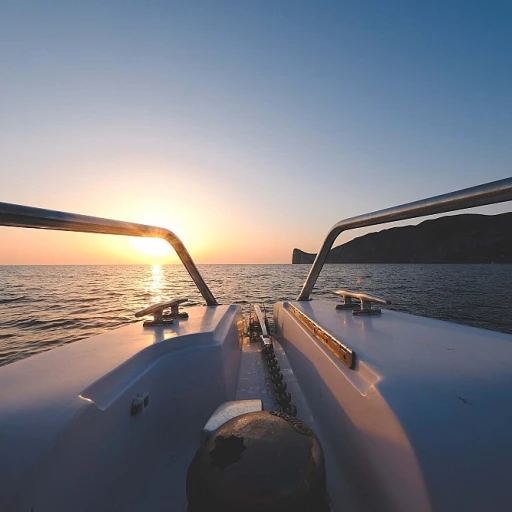

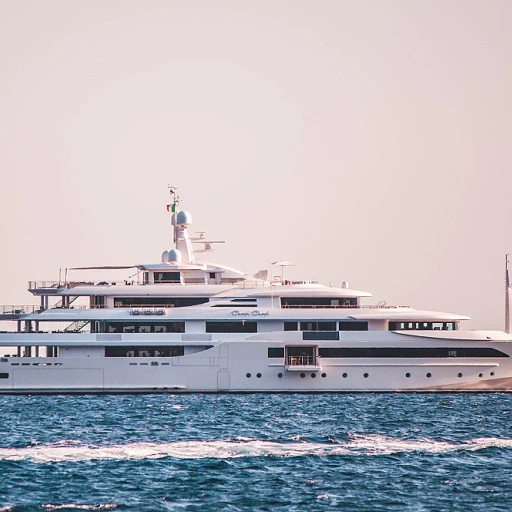
-large-teaser.webp)

